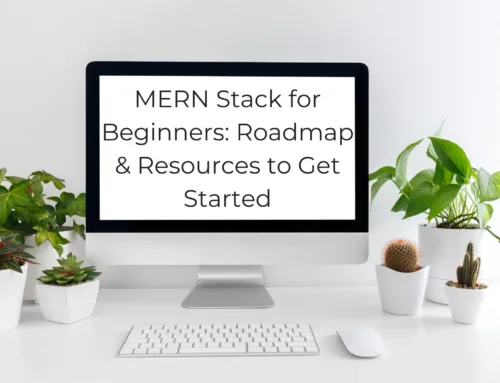The mobile app landscape is a dynamic battleground. Users demand speed, innovation, and pixel-perfect experiences across diverse platforms. On the other hand, businesses grapple with tight budgets, shrinking development cycles, and the ever-present need to reach a wider audience. In this competitive environment, Flutter development has emerged as a game-changer, offering a unique blend of cross-platform capabilities, blazing-fast performance, and stunning visuals. This comprehensive guide delves into the world of Flutter development in 2024, exploring its advantages, key features, and practical applications. Whether you’re a seasoned developer seeking an edge or a business owner exploring mobile app options, this blog post has something for you.
The Rise of Flutter: A Revolution in Cross-Platform App Development
Imagine a world where a single codebase seamlessly translates into high-performance apps for both iOS and Android. This isn’t a pipe dream; it’s the reality offered by Flutter, an open-source UI framework developed by Google. Launched in 2015, Flutter has rapidly gained traction, attracting developers and businesses alike with its innovative approach.
The Magic of Dart: At the heart of Flutter lies Dart, a versatile programming language designed to build user interfaces. Dart’s object-oriented nature and hot reload functionality (instantaneous code preview) foster an agile development environment. This allows developers to write clean, maintainable code and iterate rapidly, leading to faster development cycles and reduced costs.
Beyond Cross-Platform: While cross-platform compatibility is undoubtedly Flutter’s biggest draw, its advantages extend far beyond. Flutter boasts a rich ecosystem of widgets, pre-built components that provide the foundation for building complex UIs with minimal coding. This translates to a more intuitive development experience and reduces development time.
Aesthetics that Captivate: Flutter isn’t just about efficiency; it’s also about creating visually stunning apps. With native-looking widgets and a robust rendering engine, Flutter empowers developers to craft pixel-perfect designs with smooth animations and dynamic layouts. These aesthetically pleasing apps offer a superior user experience, ultimately driving engagement and brand loyalty.

Why Choose Flutter Development in 2024?
The benefits of Flutter development in 2024 are numerous and compelling. Here are some key reasons why businesses and developers should consider this innovative framework:
Faster Time-to-Market: With cross-platform development and hot reload functionality, Flutter significantly reduces development time compared to traditional methods. This allows businesses to get their apps to market quicker, capitalize on trends, and gain a competitive edge.
Reduced Costs: The single codebase approach eliminates the need for separate development teams for iOS and Android. This translates to cost savings for businesses, allowing them to invest more in app features or marketing initiatives.
Superior User Experience: The combination of smooth animations, intuitive widgets, and native-looking interfaces results in a seamless and engaging user experience. This fosters user satisfaction, loyalty, and increased app retention.
Rich Ecosystem & Community: Flutter boasts a vibrant community of developers, constantly creating new tools, resources, and packages. This fosters a collaborative environment and ensures continuous improvement and innovation within the framework.
Future-Proof Technology: Flutter leverages Google’s technological expertise and resources, making it a safe bet for businesses and developers. With Google’s continued investment, Flutter is poised to remain at the forefront of mobile app development for years to come.
Is Flutter Right for Your Project?
While Flutter offers numerous advantages, it’s essential to consider its suitability for your specific project. Here are some factors to evaluate:
Project Complexity: For simpler apps, frameworks like React Native or Ionic might suffice. However, for complex apps with intricate UI components and animations, Flutter’s full potential shines.
Target Audience: Flutter excels at cross-platform development. If your target audience uses both iOS and Android devices, Flutter is an excellent choice. However, if your focus is solely on a specific platform, native development might be more optimal.
Development Team Expertise: If your development team has experience with Dart and object-oriented programming, adopting Flutter will be a smooth transition. However, if the team lacks experience in these areas, additional learning might be necessary.
Resources to Get Started with Flutter Development in 2024
The good news is that taking your first steps with Flutter development in 2024 is easier than ever. Here are some essential resources to help you begin:
Official Flutter Documentation: The official Flutter documentation is a comprehensive resource, covering everything from installation and setup to advanced concepts and best practices: https://docs.flutter.dev/
Flutter Tutorials: Numerous online tutorials offer a practical, hands-on approach to learning Flutter. Platforms like Coursera, Udemy, and Codecademy offer paid and free courses.
Building Beautiful Apps with Flutter: A Step-by-Step Guide
Once you’ve decided to leverage Flutter for your next mobile app project, here’s a breakdown of the development process:
Setting Up Your Development Environment:
Make sure you have the necessary tools before getting started. Download and install the Flutter SDK, which includes everything you need to develop, test, and debug Flutter apps. Follow the official guide for your specific operating system: https://docs.flutter.dev/get-started/install
Learning the Dart Language:
As Flutter utilizes Dart for app creation, understanding its fundamentals is crucial. Explore the official Dart documentation and tutorials to grasp syntax, variables, functions, and object-oriented programming concepts: http://semantic-portal.net/dart-tour.
Understanding Widgets:
Widgets are the building blocks of Flutter UIs. Familiarize yourself with the various built-in widgets like Text, Button, and Image, as well as how to create custom widgets for unique functionalities.
Creating Your App Layout:
Flutter utilizes a widget hierarchy to structure your app’s layout. Learn how to nest widgets within each other to define the visual arrangement and functionality of different UI elements.
Data Management and State Management:
Mobile apps often deal with user input and changing data. Explore techniques for managing app state, such as using the built-in StatefulWidget class or popular state management solutions like Provider or Bloc.
Adding Functionality and Features:
With the core concepts grasped, it’s time to implement specific functionalities. This might involve integrating with APIs, implementing user authentication, or adding features like location tracking or push notifications. Flutter offers a rich ecosystem of packages to simplify various development tasks.
Testing and Debugging:
Testing ensures a smooth user experience. Utilize Flutter’s built-in testing tools like flutter test and leverage third-party libraries for more comprehensive testing. Debugging is also crucial; familiarize yourself with debugging techniques to identify and resolve issues during development.
Deployment:
Once your app is ready, it’s time to share it with the world! Flutter allows for deployment to both the Apple App Store and Google Play Store. Explore the official deployment guides for specific instructions: https://docs.flutter.dev/deployment
Beyond the Basics: Advanced Flutter Development
As you gain experience, delve into advanced Flutter concepts like:
Animations and Gestures: Take your app’s interactivity to the next level by creating smooth animations and handling user gestures effectively.
Custom Renderers: For highly customized UI elements, explore the possibility of creating custom renderers.
Performance Optimization: Optimize your app’s performance for a seamless user experience. Techniques like code profiling and memory management can be key.
Building Cross-Platform Plugins: Flutter allows creation of platform-specific plugins to leverage native functionalities like camera access or Bluetooth.
The Future of Flutter Development: What to Expect
The future of Flutter development is bright. Watch out for these exciting trends:
Enhanced Performance: Continuous improvements in the Flutter framework will likely offer even better performance and smoother animations.
Rich Ecosystem Expansion: The Flutter ecosystem is constantly growing, with more packages and tools becoming available, further streamlining development.
Integration with New Technologies: Expect smoother integration with emerging technologies like AR/VR and machine learning, opening up new possibilities for app experiences.
Desktop and Web Support: While currently focused on mobile, Flutter might expand its capabilities to desktop and web app development in the future.
Conclusion: Embrace the Future of Mobile App Development with Flutter
With its cross-platform capabilities, efficient development process, and stunning UI rendering, Flutter has become a game-changer in mobile app development. Whether you’re a seasoned developer or a business seeking to create a next-generation app, Flutter offers a compelling solution. Take advantage of the extensive resources available, and embrace the future of mobile app development with Flutter in 2024!
Ready to leverage the power of Flutter for your next mobile app? Contact Impact Mindz Tech Solutions today! We have a team of passionate Flutter experts who can transform your app vision into reality.








